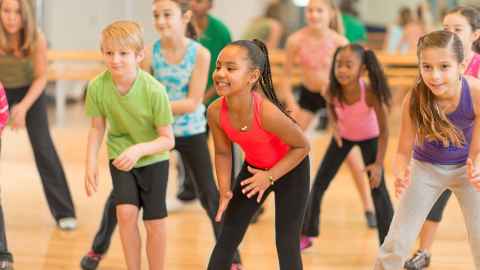Like in sport, competition is a blight on dance
5 September 2019
Opinion: Making sport more fun and less competitive will encourage teens to keep playing and not drop out. Nicholas Rowe explains why dance needs the same approach.

I was on my morning commute Tuesday when I heard that the ‘big five’ sporting codes in New Zealand had announced an intention to make sports for young people more inclusive, and less focused on winners.
Looking across at my 11-year-old daughter, I felt a rare sense of elation as she absently waved goodbye and headed into school. I was humbled by the thought that people within these sporting organisations cared about her more than they cared about gaining glorious accomplishments for their respective sports. They felt that she deserved a better way to physically interact with her peers, than to be constantly compared with them and evaluated as a winner or loser.
The sensitive leadership of NZ Cricket, Football, Hockey, Netball and Rugby have presented a strong challenge to all involved with the cultivation of young people; including those in my own field of dance. As an academic in Dance Studies at the University of Auckland, a recurrent research theme that I have pursued involves asking why do so many people stop dancing when they reach adolescence, and what does it take to make people feel that dancing is an activity anyone can participate in.
This research has identified how competition has become so entrenched with dance for teenagers, that for many of them the ideas of dancing, winning and losing are all deeply intertwined. Time and again, stories from young women who are struggling with their body image, self-esteem and an ability to engage in interdependent relationships are rooted in experiences from dance studios, a feeling that they were never as good as someone else, and therefore ‘good enough’ to continue. For thousands of young men and women across New Zealand, dancing is a hobby that they quit during their teenage years with a sense that their body has failed them.
This concern over competition in dance is shared by many around the world. Karen Schupp, at The University of Arizona, has investigated the multi-million dollar dance competition industry in the United States, which has been extended in popular culture through television programmes like Dance Moms and So You Think You Can Dance. She has identified how dance competitions “reinforce the myth of the American Dream - if you work hard, you can achieve fame”.
For thousands of young men and women across New Zealand, dancing is a hobby that they quit during their teenage years with a sense that their body has failed them.
Similarly, Lv Yisheng at the Beijing Dance Academy has critiqued the pervasiveness of dance competitions in China, identifying how competition has led to young people losing all motivation to continue dancing. Dance, like sport, can be a life-long activity that keeps people, healthy, active and connected with others in society. Recognising the troubling impact of overly-competitive mindsets, and the attrition it causes, is an urgent issue for all associated with dance.
Among dancers there will of course be those, like Olympic rower Eric Murray, who will decry the loss of competition, and see competition as a natural part of teenage life. Competition is not a natural social phenomenon however; it is a neoliberal ideal promoted within empire-building civilisations that seek to exploit their advantages over others. As any reflective teenager will tell you, kids do not all inherently want to be seen as better or worse than their friends.
There are just so many institutions (like schools and sports clubs), designed social forums (like online games), and celebrity ‘winners’ (like Eric Murray), emphasising the importance of competing. Rather than using the swagger of their own success to promote competition as ‘natural’, such celebrity spokespeople might critically reflect on how their own competitive successes, throughout their life, might have impacted others. They might also recognise that in the 20th century, with inescapably collective challenges like climate change and a burgeoning population, we urgently need to learn how to interact collaboratively, rather than competitively.
One of the most dynamic and non-competitive growth areas in dance is among the elderly. Within our rapidly ageing society, dance performance groups for seniors are becoming more and more widespread. The research shows that this is leading to greater physical and mental health, socialisation and self-actualisation among elderly dancers. For many, it is a return to dance after a lifetime in which they “never felt good enough” to perform. Transcending the triviality of the competitive dance mindset that dogged their teenage years, elderly dancers are just enjoying dance for the pleasure it brings.
For my daughter, and for thousands of other New Zealand children about to enter their teenage years, this commitment to inclusion by the “big five” brings so much hope. Unlike my generation, she might maintain a more continuous love of dance, sport, and just being physical and social with others, throughout her life.
Dr Nicholas Rowe is an Associate Professor in the Dance Studies Programme, Faculty of Creative Arts and Industries and Adjunct Professor at Chengdu University and University of the Arts Helsinki.
This article reflects the opinion of the author and not necessarily the views of the University of Auckland.
Used with permission from Newsroom Like sport, competition is a blight on dance on 5 September 2019.
Media queries
Alison Sims | Research Communications Editor
DDI 09 923 4953
Mob 021 249 0089
Email alison.sims@auckland.ac.nz